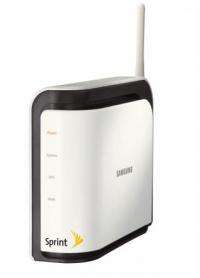March 10, 2008 weblog
A cellphone base station in every home

If you've ever had trouble getting a connection for your cellphone in your home, you could soon take matters into your own hands. Instead of relying on an overworked base station, consumers may be able to have their very own base stations inside their homes.
Called "femtocells," these miniature cellphone base stations are designed to be plugged into a home broadband or cable line. Then, they connect your call via the Internet to your service provider´s network, so you pay your Internet provider instead of your cellphone carrier. If you wander away from the short-range, low-power femtocell, your call will be handed over to the local base station, like normal.
The main advantage of a femtocell is, of course, improved coverage. A handful of femtocell companies already exist, and they claim that their technology offers much better clarity than Internet call systems such as VoIP that rely on Wi-Fi, where the signal is easily obstructed.
The new gadgets - femtocells are about the size of a cable box - could have other advantages, too. They could offer a cheap connection for downloading music, video, and podcasts to iPhones and their ilk. Femtocells could also prove valuable with the increasing popularity of 3G phones, whose high-frequency signals suffer from weakening over long distances. And, since femtocells could also have their own SIM cards, they could make calls themselves, such as alerting you when another cell phone enters your home.
However, femtocell makers still have a few challenges to face before the product is ready for market. Most important is the challenge of ensuring that cell phones in the home connect to the femtocell rather than the city´s base station (the "macrocell").
Security is another issue. If femtocells become a feature in every home, the devices will have to adjust their frequencies to avoid interference with neighboring lines.
Finally, the idea of installing a mini base station inside the home will likely concern some individuals, since it´s another source of microwaves. On the other hand, femtocells will allow cell phones to work at reduced power due to their proximity, so there´s a bit of a trade-off.
In February, the Mobile World Congress in Barcelona, Spain, found the technology promising, boosting the hopes of the companies that have invested heavily in femtocell research. For example, companies such as Ubiquisys and ip.access in the UK and Sprint in the US are betting that the advantages of the technology will overcome the challenges. While Sprint is already releasing heavily subsidized $50 femtocells in select US cities, other companies believe more testing is needed, and suggest a final price closer to $250.
via: New Scientist





















